Electric heating and its features
Many people believe that electric heating of an apartment or house is too expensive "pleasure", since the cost of electricity is very high. However, modern devices are becoming more economical, besides, they have a number of advantages compared to traditional ones, as a result of which they enjoy certain popularity among consumers. Below we take a closer look at the most common types of electric heating and their features.

Types of heating appliances
To date, you can implement apartment heating with electricity in several ways:
- With the help of radiators and convectors (direct heating);
- System "warm floor";
- Infrared heaters;
- Water heating.
All of these options for electric heating have their own advantages and disadvantages. Therefore, below we take a look at them in more detail.
Direct heating
Perhaps the most common heating appliances are oil radiators and convectors. The design of these heaters is radically different, so we consider them separately.

Oil radiators
It is not difficult to guess that mineral oil is used as a heat carrier in these devices. This is due to the fact that the temperature of boiling oil is much higher than water. Accordingly, radiators are capable of heating to temperatures in excess of 100 degrees.
Heating of the coolant is carried out with the help of heating elements. Most models of heaters of this type have a capacity in the range of 2.5 - 3 kW. Due to this, the oil is heated very quickly.
Most often, these devices are used as additional heating, as they consume a lot of electricity. For example, they can be used to heat rooms in a house or apartment during a period when it is cold outside, and central heating has not yet been turned on.
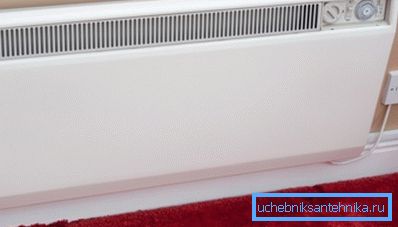
Convection Radiators
Convection heating from electricity is an alternative to oil radiators. In the case of these devices there is a heating element that turns electricity into heat. Moreover, thermal energy is spent on heating the air that passes through the body of the apparatus.
By type of construction, electrical heating converters are divided into three types:
- Stationary wall;
- Stationary floor recessed;
- Outdoor (portable).
To ensure convection from the bottom, these devices have openings for suction of cold air, and on the top - a grill for its exit. Special dampers allow you to adjust the level of air flow.

Moreover, some models allow you to control the flaps using the remote control. In fact, they work as an electric faucet of the heater, just blocking not the liquid, but the air flow. It should also be noted that almost all convectors are equipped with thermal sensors that automatically turn the device on and off.
From the point of view of efficiency, the use of electric convectors for space heating is more justified than oil radiators. In addition, they have another important advantage - their surface is not heated to a high temperature, thus eliminating the risk of getting burned, as is the case with oil machines.
Of course, gas or solid fuel heating is still more profitable. However, the cost of heating with electricity of 80 m2 and less will be quite acceptable.
Floor heating system
First of all, it should be said that the warm floor is not the main heating system, since it cannot warm up to a high temperature and, accordingly, provide a full heating of the rooms. However, it is a great addition to basic heating.
By design, electric floor heating resembles a water one. The only difference is that the heating element used is not a tube with a coolant circulating in it, but a heating cable or infrared film. Accordingly, such a system is mounted under the floor covering.
Thermal sensors are installed on separate sections of the floor and connected to a thermostat. This allows you to maintain the floor temperature at a certain level.
Installation of such a heating system is not too complicated, so it can be done even with your own hands.
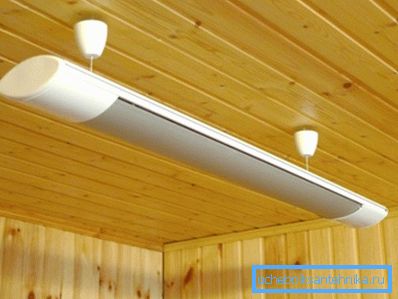
Infrared heating
Infrared heaters are a relatively new type of heater. Their main feature is the heating element, which forms infrared radiation. Unlike traditional heaters, infrared devices do not heat the air, but the surfaces of surrounding objects, which in turn heat the air.
Recently, infrared heating is very popular due to its efficiency and economy. The efficiency of these devices reaches 90 percent. Therefore, infrared heaters are considered the most effective among all heating devices.
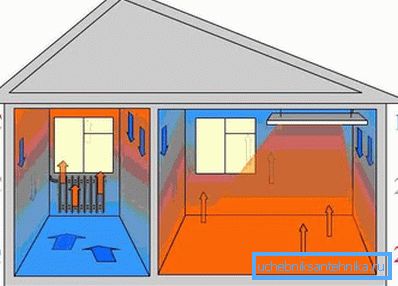
The devices exist in the following versions:
- Outdoor;
- Wall mounted;
- Ceiling.
It is possible to use devices both for the general, and for local heating. Moreover, most often they are used in conjunction with heated floors.
It should be noted that it is very simple to organize infrared electric heating with your own hands in a house or apartment, since it is enough just to fix the appliances on the wall or ceiling and connect them to electricity.
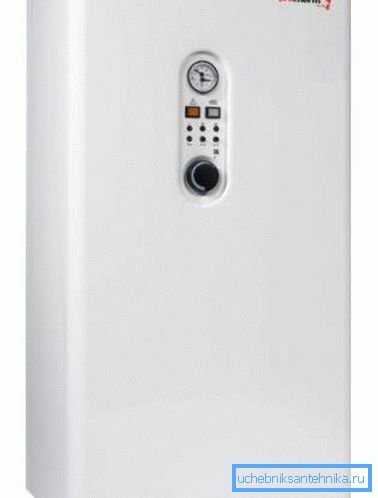
Water heating
Electric water heating is considered the most efficient, in fact, it does not differ from other water systems, except that the heat carrier in the system heats the electric boiler or boiler.
Today there are electric boilers for heating of three types:
- Induction installation;
- Tenovye;
- Electrode installation.
Below we take a look at the features of each type.
Heating boilers
Most often, electric independent heating in the apartment is realized with the help of heating boilers. The principle of operation of these devices is quite simple - TENs convert electrical energy into heat and transfer it to the coolant.
Such a boiler consists of only two main elements - the heating element and the control unit. The latter is necessary in order to control and regulate the modes of operation of the apparatus. Moreover, the electronics automatically turns on and off the heating element when necessary.
Note! The most vulnerable element in the electric boiler is the heater. Given that the price of equipment is quite high, it is necessary to choose a model of the device, in which the heating element is a replaceable component.
Among the advantages of these devices, it is possible to distinguish the moment that the electrical parts do not come into contact with water, which eliminates the possibility of current flowing through the heating system. In addition, in the event of an accident, the automatic switches off the device.
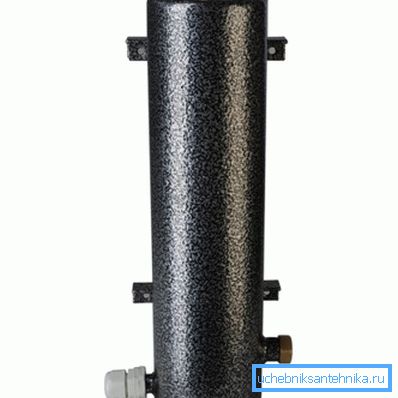
Induction
Induction boilers have two circuits at once - heat exchange and magnetic. There is a coil in the magnetic circuit, which provides the apparatus with a magnetic field, due to which the heating medium is heated. The principle of operation of this circuit resembles an induction hob.
The heat exchange circuit provides temperature redistribution. After that, the water is heated and enters the heating system.
The disadvantages of these devices include the high cost and the problematic nature of the smooth adjustment of operating modes. But they are the most secure due to the absence of a heating element.
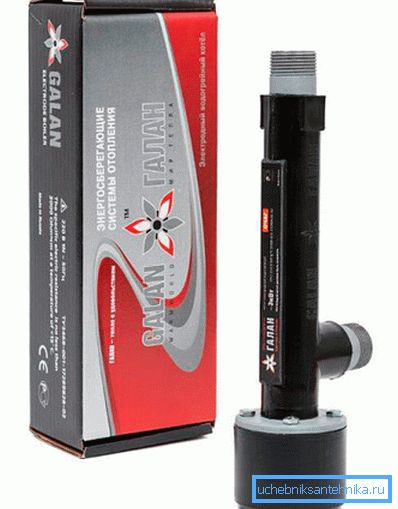
Electrode boilers
A good alternative to heating boilers are electrode devices. They are a small container, inside which are located electrodes. When the tank is filled with water, electricity is supplied to the electrodes, as a result of which the coolant begins to heat up.
Note! Normal tap water is not suitable for use in such systems. Therefore, before operating the system, the coolant is subjected to special training.
Here, perhaps, and all types of electric heating, which are popular among residents of houses and apartments.
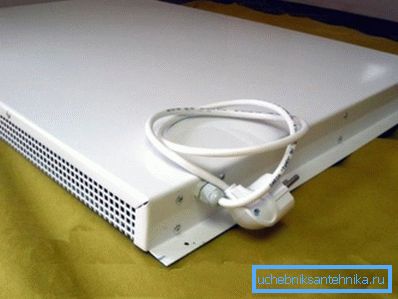
Features of electric heating
Merits
Before making a choice in favor of electric heating, we recommend that you familiarize yourself with its advantages and disadvantages.
So, the pluses include the following points:
- The ability to arrange heating independently, since there is no need to connect to the gas pipeline and install the chimney.
- Getting permission to use an electric boiler is much easier than using a gas boiler.. For other electric heaters permission is not required at all.
- Electrical devices are simpler and more convenient to use, as there is no need to monitor the flow of fuel.
- Fast heating - a comfortable temperature in the room is reached 10-15 minutes later after turning on the device.
disadvantages
As for the shortcomings, among them are:
- High cost of equipment;
- In most cases, heating is quite expensive;
- High load on the electrical wiring, therefore, before using the equipment, you must make sure that the house or apartment has suitable wiring.
If these shortcomings are not critical for you, then heating with electrical appliances would be a good choice.
Conclusion
Today, there are many types of electrical heating devices. Therefore, the choice depends on the tasks assigned to them tasks. For example, electric heating water can be used as the main, while infrared heaters will provide local heating, for example, the workplace.
From the video in this article, you can get more information on this topic.